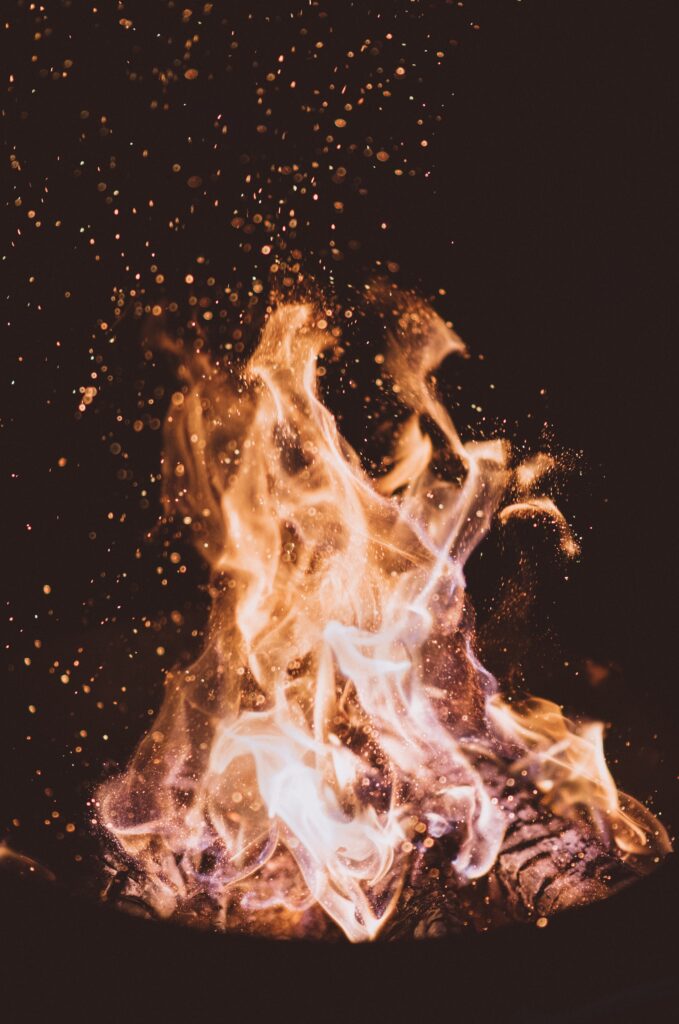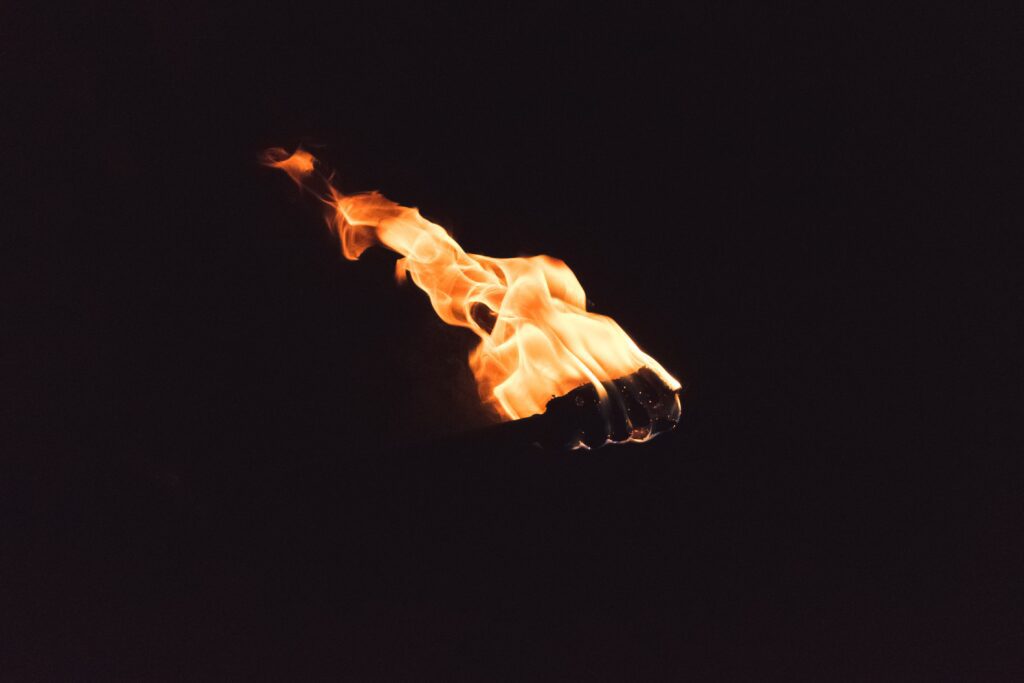In the world of plumbing and gas installation, it is crucial to pay attention to the details, especially when it comes to threaded fittings. Mismatched threaded fittings can lead to significant risks such as gas leaks and fire hazards. This article focuses on providing essential tips on how to avoid these dangers by ensuring the right fittings are used and properly installed. Join us as we explore the importance of matching threaded fittings and learn practical steps to guarantee the safety of your plumbing and gas systems.



This image is property of images.unsplash.com.
Understanding the Importance of Proper Threaded Fittings
Learning about gas leak dangers
When it comes to the safety of our homes and workplaces, gas leaks are a serious concern. A gas leak can have catastrophic consequences, from potential explosions to health hazards caused by exposure to toxic gases. In order to prevent these dangers, it is crucial to have a deep understanding of the importance of proper threaded fittings.
Knowing the fire hazards due to gas leaks
Gas leaks not only pose a risk of explosion but also increase the likelihood of a fire hazard. Gas is highly flammable, and even a small spark can ignite it, resulting in a dangerous fire. In fact, many fire incidents are caused by gas leaks that could have been prevented with the use of correct threaded fittings. Therefore, it is essential that we educate ourselves on the potential fire hazards associated with gas leaks.
Recognizing the role of correct thread fittings in safety measures
Proper, well-matched threaded fittings play a significant role in ensuring safety when it comes to gas systems. These fittings provide a secure and reliable connection between pipes, valves, and other components. By choosing the right fittings and installing them correctly, we can minimize the risks of gas leaks, explosions, and fire hazards. Understanding the importance of correct thread fittings is vital for maintaining a safe environment.
Identifying Types of Threaded Fittings
Distinguishing between different types of threads
Threaded fittings come in a variety of types, each designed for specific purposes. The two main types of threads commonly used are tapered and parallel. Tapered threads are typically used for sealing applications, such as plumbing connections, while parallel threads are suitable for mechanical connections. It is important to have a good understanding of these different thread types to ensure the proper selection and use of threaded fittings.
Understanding the differences in fitting standards
In addition to different thread types, various fitting standards exist. These standards, such as NPT (National Pipe Thread) and BSP (British Standard Pipe), dictate the dimensions, tolerances, and thread designs of the fittings. Different regions or industries may prefer specific standards, making it essential to know and adhere to the appropriate fitting standards for specific applications. Failure to meet the fitting standards can result in mismatched fittings and increased risks of gas leaks or other issues.
Mastering the various fitting sizes
Threaded fittings are available in a range of sizes to accommodate different pipe diameters. It is crucial to comprehend the sizing system, commonly designated by nominal pipe size (NPS) or outside diameter (OD), to select the correct fitting size for a particular application. Using the wrong size fitting can lead to poor sealing, leakage, or even structural damage to the gas system. Hence, mastering the various fitting sizes is crucial for maintaining the integrity of the system.



This image is property of images.unsplash.com.
The Challenges of Mismatching Threaded Fittings
Explaining the dangers of incorrect fitting sizes
One of the major challenges associated with threaded fittings is the potential for mismatching sizes. Using fittings that do not properly match the pipe size can result in a variety of problems. When a fitting is too small, it may not create a secure connection, leading to leaks and increased pressure, which can ultimately cause pipe bursts or system failures. Conversely, using a fitting that is too large can lead to unsteady connections, leaks, and compromised system performance. Therefore, it is essential to avoid mismatching fitting sizes to maintain the safety and functionality of the gas system.
Discussing the risks of incompatible fitting types
In addition to mismatched sizes, incompatible fitting types can pose significant risks. Different fittings are designed to work with specific thread types and standards, ensuring proper sealing and connection. Using incompatible fittings can result in leaks, poor sealing, and compromised structural integrity. It is crucial to understand the compatibility of fitting types to avoid the potential dangers associated with incompatible fittings.
Understanding the long-term issues of mismatching threads
Mismatching threads is another challenge that can arise with threaded fittings. Threads that do not correctly match can cause problems such as weak connections, leaks, and increased wear and tear on the fittings. Over time, these issues can worsen and ultimately lead to larger gas leaks, pipe failures, and costly repairs. Recognizing the long-term consequences of using mismatched threads emphasizes the need for proper selection and installation of threaded fittings.
How Gas Leaks Occur due to Incorrect Fittings
Detailing the process of usual gas leaks
Gas leaks typically occur when the integrity of the gas system is compromised, allowing gas to escape into the surrounding environment. Leaks can happen due to various factors, including inadequate sealing, damaged pipes, or incorrect fittings. Detection of gas leaks can be challenging as the gas is often odorless and invisible. Therefore, it is crucial to understand the common causes and potential risks associated with gas leaks to effectively prevent them from occurring.
Connecting leak causes to poor fitting selection
One of the leading causes of gas leaks is the use of incorrect threaded fittings. Poor fitting selection can result in ill-fitting connections, inadequate sealing, and increased vulnerability to leaks. For instance, using fittings that do not match the pipe size or thread type can create gaps and spaces where gas can escape. Understanding the correlation between poor fitting selection and gas leaks is essential for ensuring the safety and reliability of gas systems.
Highlighting the importance of fitting compatibility in preventing leaks
To prevent gas leaks, it is vital to prioritize fitting compatibility. Correctly matched fittings ensure a tight seal, reducing the risk of leaks and maintaining the integrity of the gas system. Proper selection of threaded fittings, including considering thread types, standards, and sizes, is crucial in creating reliable connections. By highlighting the importance of fitting compatibility, we can emphasize the significance of preventing gas leaks through proper fitting selection and installation.



This image is property of images.unsplash.com.
Preventing Fire Hazards through Fitting Safety
Identifying fire risks related to gas leaks
Gas leaks pose a significant fire hazard due to the highly flammable nature of gas. Any ignition source, such as sparks from electrical equipment or open flames, can lead to a dangerous fire if gas is present. The consequences of a fire caused by a gas leak can be devastating, jeopardizing lives and causing property damage. Identifying the fire risks associated with gas leaks helps us understand the urgency of ensuring fitting safety in gas systems.
Teaching prevention methods for gas-leak related fire hazards
Preventing fire hazards resulting from gas leaks requires both proactive measures and preparedness. Smoke detectors, fire extinguishers, and fire sprinkler systems are essential safety features that can minimize the damage caused by a fire. Additionally, regular inspection and maintenance of gas systems, including threaded fittings, help identify potential leaks or issues before they escalate. Educating ourselves on these prevention methods allows us to take appropriate actions to safeguard against fire hazards.
Promoting the role of correct fitting usage in fire safety
Correct fitting usage plays a crucial role in promoting fire safety. By using properly matched fittings, we can maintain leak-free connections, reducing the chance of gas escaping and the potential for a fire hazard. Adhering to fitting standards and sizing requirements ensures that fittings can handle the pressures and stresses of the gas system. Promoting the use of correct fittings as a fire safety measure emphasizes the importance of responsible and informed fitting selection.
Proper Installation of Threaded Fittings
Walking through the installation process
Proper installation of threaded fittings is essential for ensuring their effectiveness and safety. The installation process involves several steps, starting with thoroughly cleaning and preparing the pipe ends and fittings. Next, thread sealant or tape is applied to ensure a secure and leak-free connection. Finally, the fittings are tightly screwed onto the pipe to establish a reliable joint. Properly installing threaded fittings requires attention to detail and following specific procedures to minimize the risks of leaks or damage to the gas system.
Demonstrating how to match correct thread types and sizes
Matching the correct thread types and sizes during installation is crucial for achieving a secure and leak-free connection. Carefully inspecting the pipe and the fittings, referring to fitting standards, and accurately measuring the pipe size are essential steps in ensuring a proper match. Incorrect selection can lead to weakened connections, leaks, and compromised safety. Demonstrating the process of matching correct thread types and sizes provides clarity and guidance for successful fitting installation.
Emphasizing the need for proper installation tools and methods
Proper installation of threaded fittings requires the use of appropriate tools and methods. These tools may include pipe wrenches, thread sealants, and thread gauges. Using the correct tools and following recommended installation techniques, such as applying the correct amount of torque or properly aligning the fittings, is crucial for achieving reliable and leak-free connections. Emphasizing the need for proper installation tools and methods helps promote a systematic approach to fitting installation and reduces the likelihood of installation errors.
Maintenance and Checks for Threaded Fittings
Understanding the importance of routine fitting checks
Routine maintenance and checks are crucial for ensuring the reliability and safety of threaded fittings. Over time, fittings may wear out, develop leaks, or become damaged. Regularly inspecting fittings and performing maintenance checks can help identify any issues before they escalate. By understanding the importance of routine fitting checks, we can adopt a proactive approach to maintenance, ensuring the longevity and performance of the gas system.
Learning how to properly maintain threaded fittings
Proper maintenance of threaded fittings involves a few key steps. Firstly, regularly inspecting fittings for signs of wear, damage, or corrosion helps identify potential issues early on. Secondly, cleaning fittings and removing any debris or buildup can prevent clogs and ensure proper sealing. Finally, lubricating fittings with the appropriate lubricants promotes smooth operation and prevents seizing. Learning how to properly maintain threaded fittings is essential for prolonging their lifespan and ensuring their optimal performance.
Identifying signs of worn out or mismatched fittings
Being able to identify signs of worn-out or mismatched fittings is crucial for effective maintenance. Signs such as leaks, loose connections, rust, corrosion, or unusual noises can indicate problems with threaded fittings. It is important to address these signs promptly. Ignoring or neglecting these signs can lead to bigger issues, such as gas leaks, compromised safety, or costly repairs. Identifying signs of worn-out or mismatched fittings empowers us to take timely action and prevent potential hazards.
Correct Response to Suspected Gas Leaks
Teaching safe and immediate response to possible leaks
In the event of a suspected gas leak, it is important to know how to respond safely and efficiently. Safety should be the top priority, so it is crucial to evacuate the premises, ensuring everyone’s well-being. Avoid using any electrical devices or causing static electricity, as these can ignite gas. Open windows and doors to allow for ventilation, and immediately contact emergency services to report the suspected gas leak. Educating ourselves and others on the safe and immediate response to possible gas leaks can save lives and prevent further damage.
Discussing the utilization of professional services
Gas leaks can be complex and dangerous, requiring professional expertise for proper assessment and repairs. It is highly recommended to seek the assistance of certified professionals who specialize in gas systems and fittings. These professionals can accurately detect and locate gas leaks, make necessary repairs, and ensure the overall safety of the gas system. Discussing the utilization of professional services emphasizes the importance of relying on trained professionals to handle gas leak situations.
Highlighting the importance of swift action in gas leak scenarios
When dealing with gas leaks, swift action is crucial to prevent further risks. Delaying or ignoring the signs of a gas leak can escalate the situation and put lives and property in danger. Acting promptly by evacuating, reporting the leak, and seeking professional assistance helps minimize the potential hazards associated with gas leaks. Highlighting the importance of swift action empowers individuals to take immediate steps in gas leak scenarios and prioritize safety.
Training and Expertise Required for Handling Fittings
Discussing the necessity for professional training
Handling threaded fittings requires a certain level of expertise and knowledge to ensure proper selection, installation, and maintenance. Professional training provides individuals with the necessary understanding of fitting types, standards, sizing, and installation techniques. It also covers safety protocols, troubleshooting, and emergency response. Discussing the necessity for professional training highlights the importance of acquiring the skills and competencies required to handle fittings effectively and safely.
Describing the skillset needed for proper fitting handling and installation
Proper fitting handling and installation require specific skill sets. These include the ability to accurately measure and identify pipe sizes, understanding various fitting types and standards, and using the appropriate tools and techniques for installation. Additionally, having knowledge of safety procedures and emergency response is crucial when working with gas systems. Describing the required skillset emphasizes the importance of acquiring the necessary expertise to handle fittings proficiently and minimize risks.
Encouraging use of certified professionals for gas system fitting
Given the complexities and potential hazards associated with gas system fittings, it is highly recommended to engage the services of certified professionals. Certified professionals have undergone extensive training, possess the required knowledge and experience, and adhere to safety standards and regulations. Engaging certified professionals for gas system fitting ensures that installations and maintenance are performed correctly and safely. Encouraging the use of certified professionals emphasizes the value of expertise and professionalism when it comes to handling fittings.
Legislation and Regulations on Gas Fitting Installation
Sharing the legal stipulations on gas installation
To ensure the safety and reliability of gas fitting installations, various legislation and regulations are in place. These regulations stipulate the requirements for gas systems, including fittings, installation procedures, and safety measures. Compliance with these legal requirements is essential to avoid penalties and legal consequences. Sharing the legal stipulations on gas installation highlights the importance of adhering to regulations and underscores the commitment to safety in gas systems.
Highlighting potential legal consequences of improper fitting
Failure to comply with gas fitting regulations can have serious legal consequences. In addition to the potential risks to human life and property, improper fitting installation can result in legal penalties, fines, and even criminal charges. By highlighting the potential legal consequences, we emphasize the seriousness of proper fitting selection, installation, and maintenance. Compliance with legal requirements is not only an ethical responsibility but also a legal obligation.
Informing about regulations on fitting maintenance and checks
Regulations on fitting maintenance and checks are designed to ensure ongoing safety and reliability of gas systems. These regulations may require regular inspections, testing, and maintenance of fittings to detect any issues or potential hazards. Adhering to these maintenance and inspection regulations helps identify and address problems before they escalate, minimizing the risks of gas leaks or other related incidents. Informing about these regulations emphasizes the importance of ongoing maintenance and checks for the safe operation of gas systems.
In conclusion, understanding the importance of proper threaded fittings is crucial for maintaining the safety and functionality of gas systems. Through knowledge of gas leak dangers, the different types of threaded fittings, the challenges posed by mismatched fittings, the occurrence of gas leaks due to incorrect fittings, and the preventive measures to mitigate fire hazards, we can ensure a safer environment. By emphasizing proper installation, maintenance, and response to gas leaks, as well as the training and expertise required to handle fittings, we can minimize the risks associated with gas systems. Compliance with legislation and regulations further ensures the legal and ethical responsibilities in gas fitting installation. Let us prioritize safety and make informed decisions to avoid gas leaks and fire hazards caused by incorrect threaded fittings.
